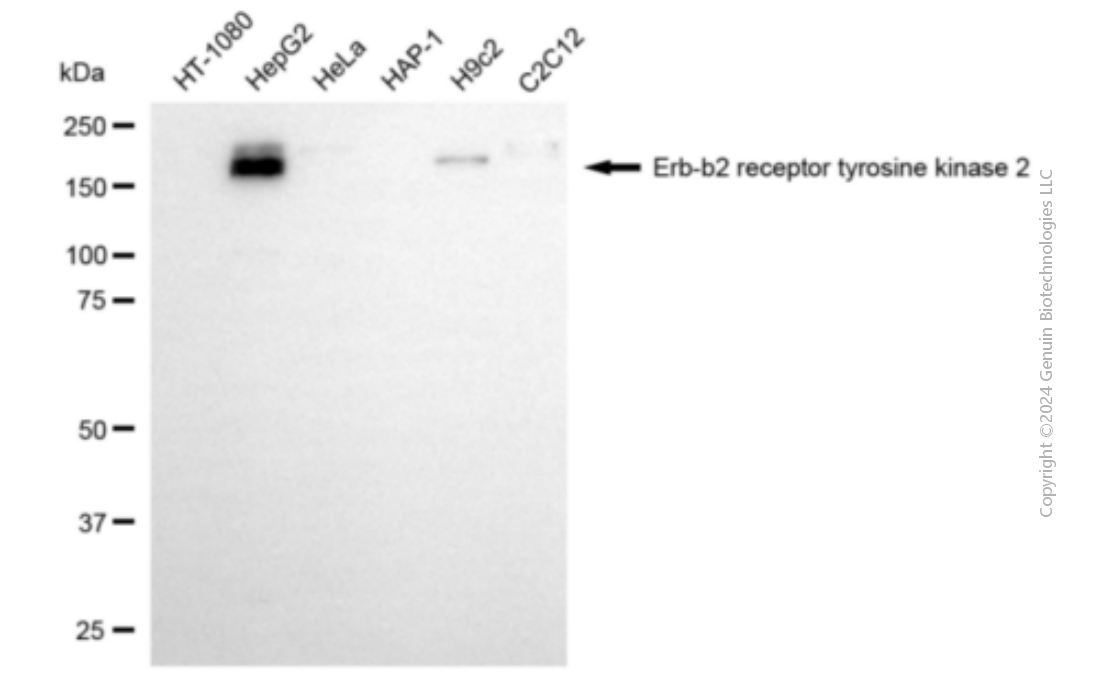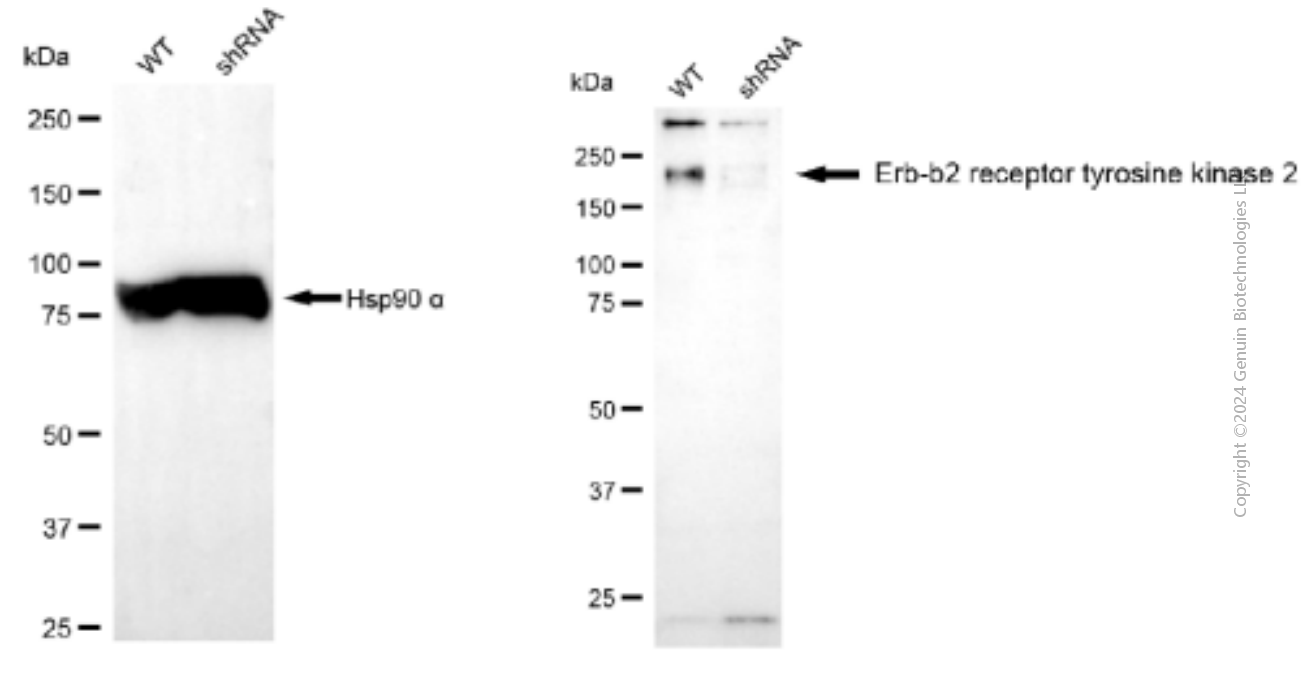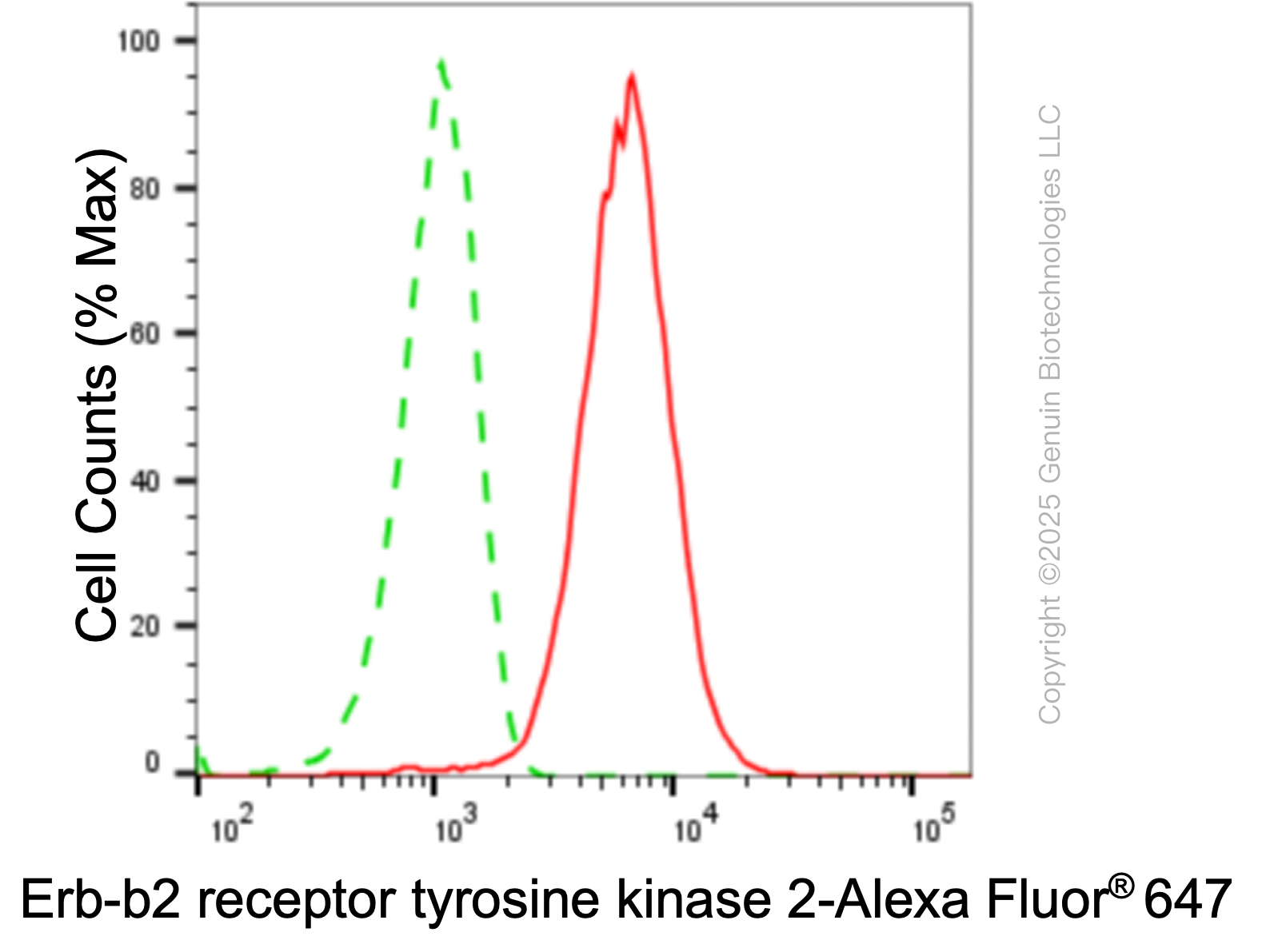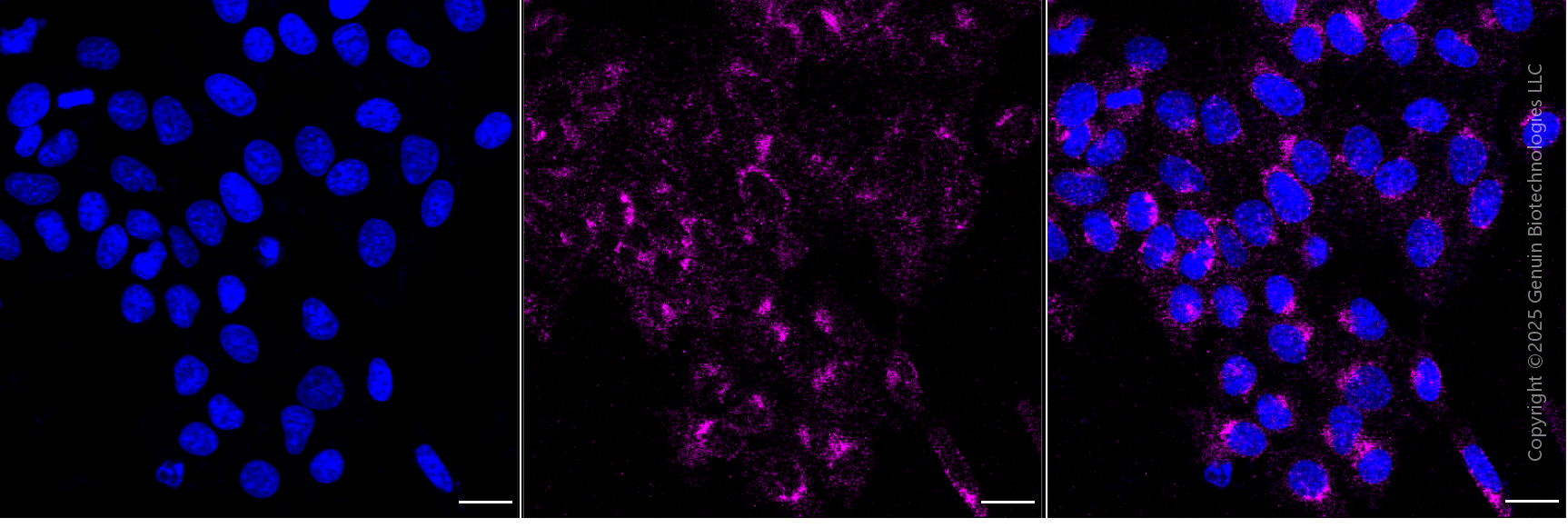KD-Validated Anti-ERBB2 Mouse Monoclonal Antibody
Mouse monoclonal antibody
- SPECIFICATION
- CITATIONS
- PROTOCOLS
- BACKGROUND

Application
| WB, FC, ICC |
|---|---|
| Primary Accession | P04626 |
| Reactivity | Rat, Human, Mouse |
| Clonality | Monoclonal |
| Isotype | Mouse IgG2a |
| Clone Names | 24GB5710 |
| Calculated MW | Predicted, 138 kDa, Observed, 180 kDa |
| Gene Name | ERBB2 |
| Aliases | ERBB2; Erb-B2 Receptor Tyrosine Kinase 2; HER2; NEU 2; C-ERB-2; C-ERB2; MLN-19; HER-2; CD340; NGL; V-Erb-B2 Avian Erythroblastic Leukemia Viral Oncogene Homolog 2; Tyrosine Kinase-Type Cell Surface Receptor HER2; Neuro/Glioblastoma Derived Oncogene Homolog; Human Epidermal Growth Factor Receptor 2; Receptor Tyrosine-Protein Kinase ErbB-2; Metastatic Lymph Node Gene 19 Protein; Proto-Oncogene C-ErbB-2; Proto-Oncogene Neu; P185(ErbB2); EC 2.7.10.1; MLN 19; V-Erb-B2 Avian Erythroblastic Leukemia Viral Oncogene Homolog 2 (Neuro/Glioblastoma Derived Oncogene Homolog) 2; V-Erb-B2 Erythroblastic Leukemia Viral Oncogene Homolog 2, Neuro/Glioblastoma Derived Oncogene Homolog; V-Erb-B2 Avian Erythroblastic Leukemia Viral Oncoprotein 2; Neuroblastoma/Glioblastoma Derived Oncogene Homolog; Metastatic Lymph Node Gene 19; C-Erb B2/Neu Protein; CD340 Antigen; P185(ERBB2); HER-2/Neu; Herstatin; P185erbB2; EC 2.7.10; VSCN2; MLN19; TKR1 |
| Immunogen | Recombinant protein of human ERBB2 |
| Gene ID | 2064 |
|---|---|
| Other Names | Receptor tyrosine-protein kinase erbB-2, 2.7.10.1, Metastatic lymph node gene 19 protein, MLN 19, Proto-oncogene Neu, Proto-oncogene c-ErbB-2, Tyrosine kinase-type cell surface receptor HER2, p185erbB2, CD340, ERBB2, HER2, MLN19, NEU, NGL |
| Name | ERBB2 |
|---|---|
| Synonyms | HER2, MLN19, NEU, NGL |
| Function | Protein tyrosine kinase that is part of several cell surface receptor complexes, but that apparently needs a coreceptor for ligand binding. Essential component of a neuregulin-receptor complex, although neuregulins do not interact with it alone. GP30 is a potential ligand for this receptor. Regulates outgrowth and stabilization of peripheral microtubules (MTs). Upon ERBB2 activation, the MEMO1-RHOA-DIAPH1 signaling pathway elicits the phosphorylation and thus the inhibition of GSK3B at cell membrane. This prevents the phosphorylation of APC and CLASP2, allowing its association with the cell membrane. In turn, membrane-bound APC allows the localization of MACF1 to the cell membrane, which is required for microtubule capture and stabilization. |
| Cellular Location | Cell membrane; Single-pass type I membrane protein. Cell projection, ruffle membrane; Single-pass type I membrane protein. Note=Internalized from the cell membrane in response to EGF stimulation. [Isoform 2]: Cytoplasm. Nucleus. |
| Tissue Location | Expressed in a variety of tumor tissues including primary breast tumors and tumors from small bowel, esophagus, kidney and mouth. |

Thousands of laboratories across the world have published research that depended on the performance of antibodies from Abcepta to advance their research. Check out links to articles that cite our products in major peer-reviewed journals, organized by research category.
info@abcepta.com, and receive a free "I Love Antibodies" mug.
Provided below are standard protocols that you may find useful for product applications.
If you have used an Abcepta product and would like to share how it has performed, please click on the "Submit Review" button and provide the requested information. Our staff will examine and post your review and contact you if needed.
If you have any additional inquiries please email technical services at tech@abcepta.com.














 Foundational characteristics of cancer include proliferation, angiogenesis, migration, evasion of apoptosis, and cellular immortality. Find key markers for these cellular processes and antibodies to detect them.
Foundational characteristics of cancer include proliferation, angiogenesis, migration, evasion of apoptosis, and cellular immortality. Find key markers for these cellular processes and antibodies to detect them. The SUMOplot™ Analysis Program predicts and scores sumoylation sites in your protein. SUMOylation is a post-translational modification involved in various cellular processes, such as nuclear-cytosolic transport, transcriptional regulation, apoptosis, protein stability, response to stress, and progression through the cell cycle.
The SUMOplot™ Analysis Program predicts and scores sumoylation sites in your protein. SUMOylation is a post-translational modification involved in various cellular processes, such as nuclear-cytosolic transport, transcriptional regulation, apoptosis, protein stability, response to stress, and progression through the cell cycle. The Autophagy Receptor Motif Plotter predicts and scores autophagy receptor binding sites in your protein. Identifying proteins connected to this pathway is critical to understanding the role of autophagy in physiological as well as pathological processes such as development, differentiation, neurodegenerative diseases, stress, infection, and cancer.
The Autophagy Receptor Motif Plotter predicts and scores autophagy receptor binding sites in your protein. Identifying proteins connected to this pathway is critical to understanding the role of autophagy in physiological as well as pathological processes such as development, differentiation, neurodegenerative diseases, stress, infection, and cancer.





